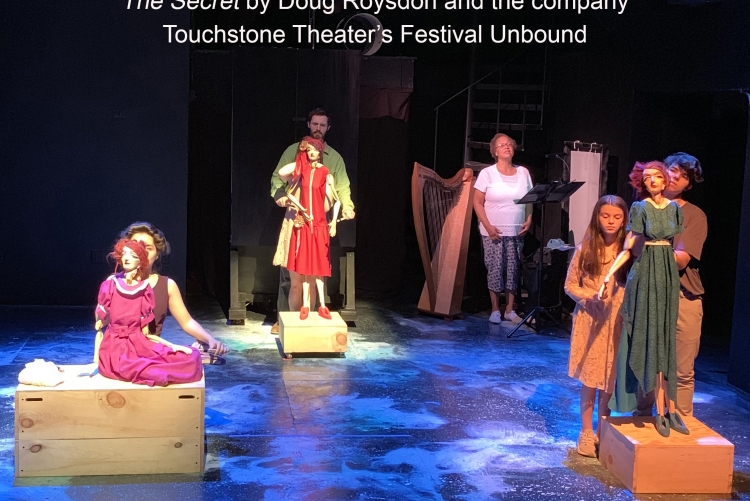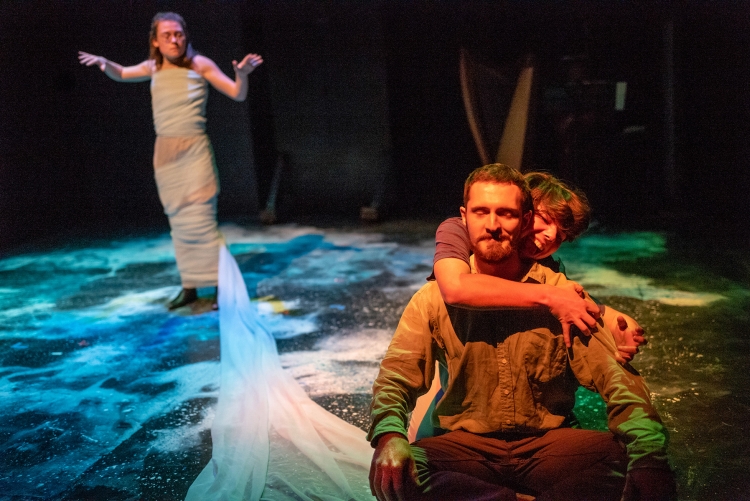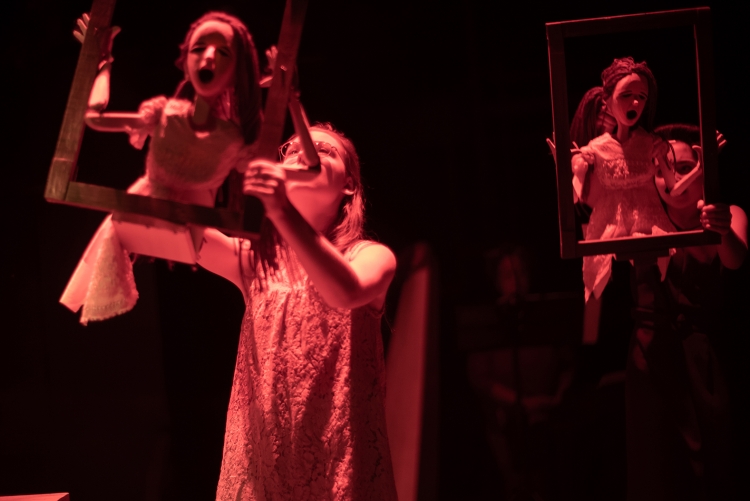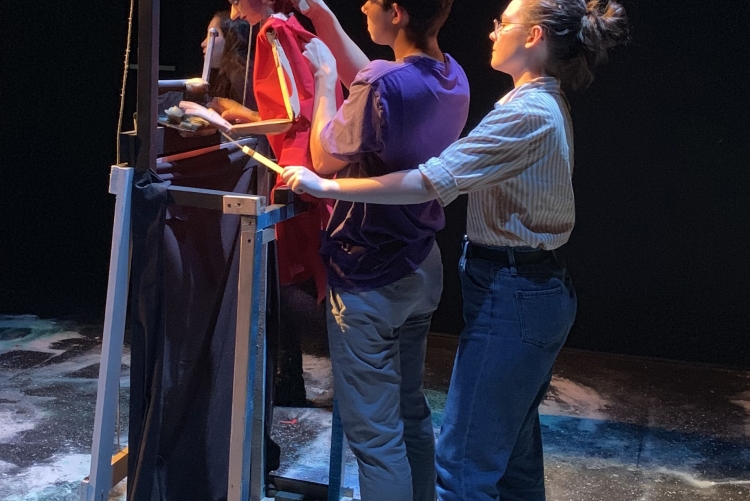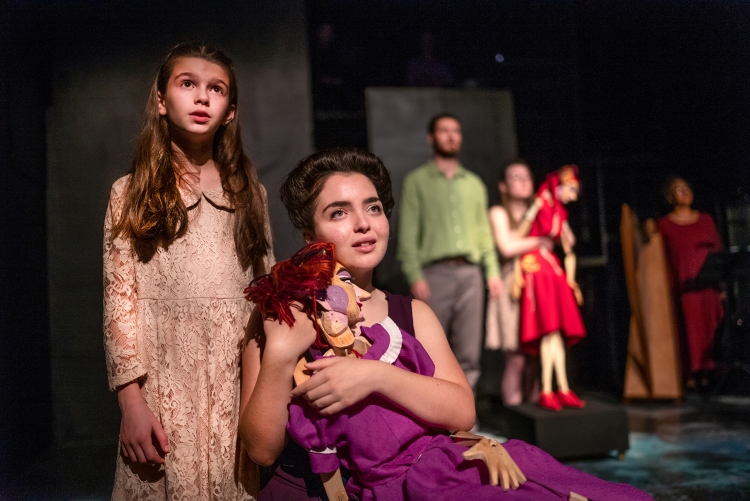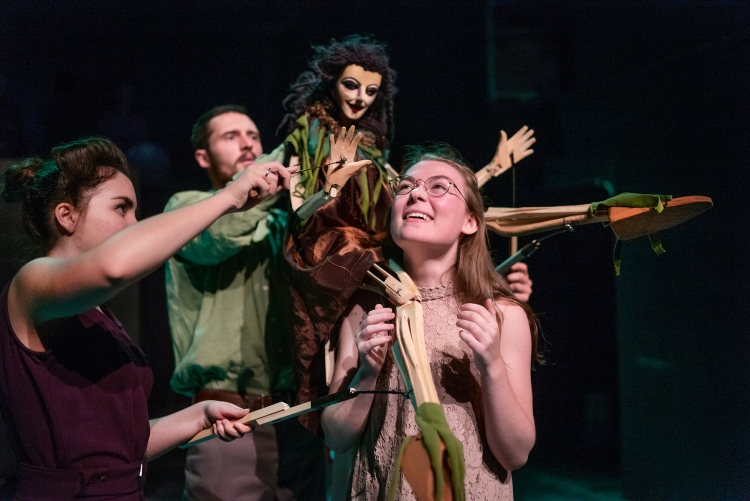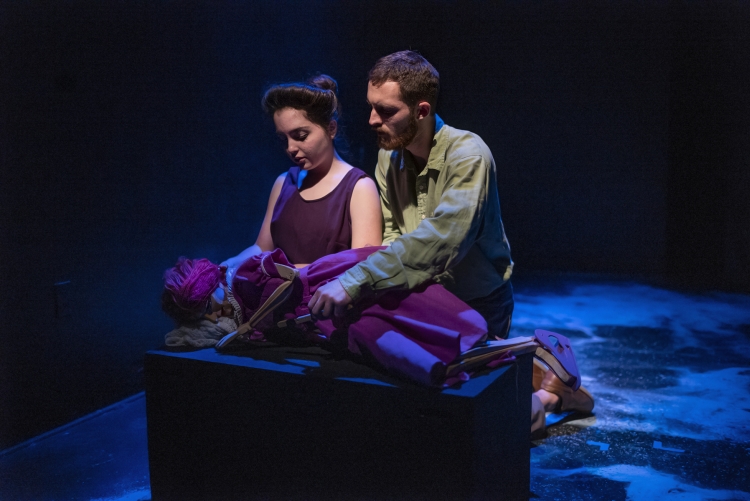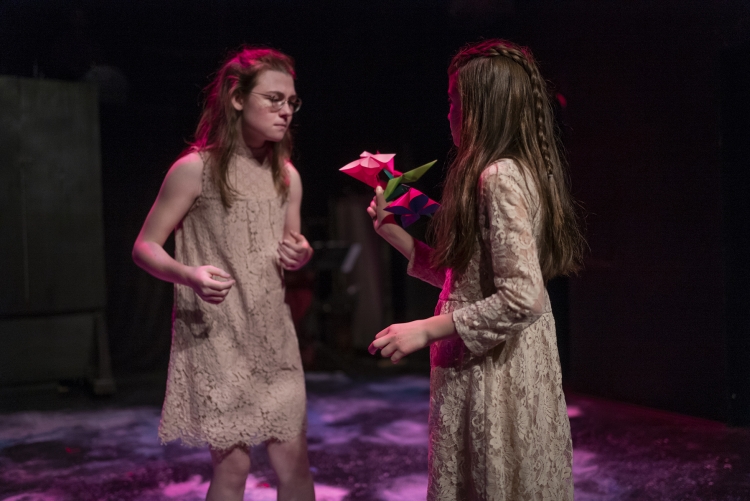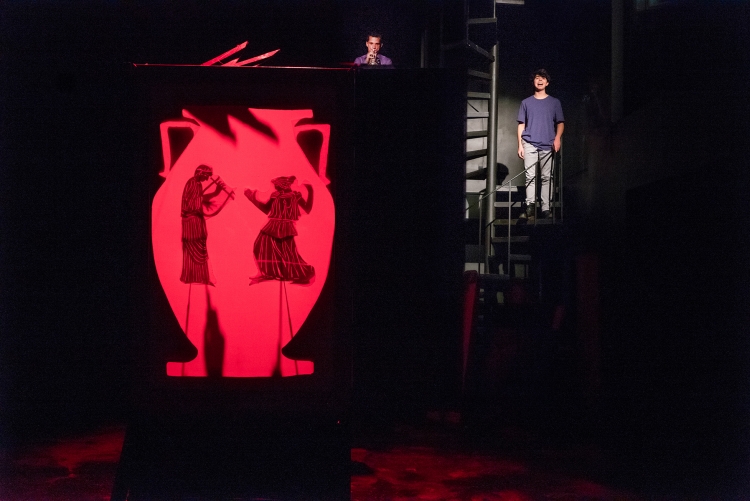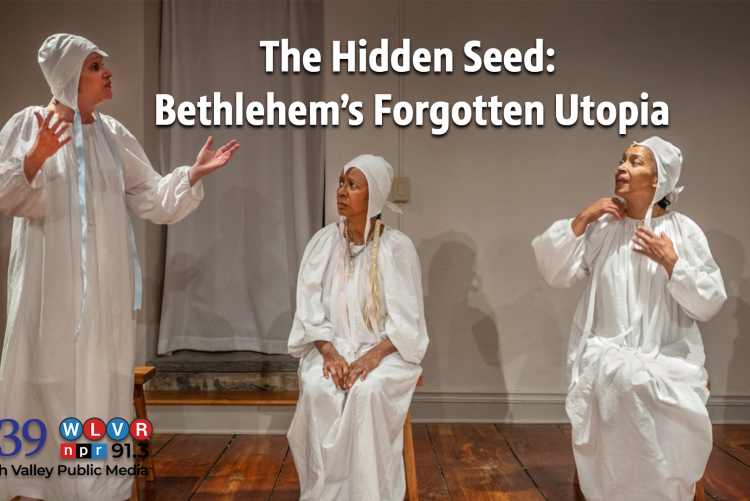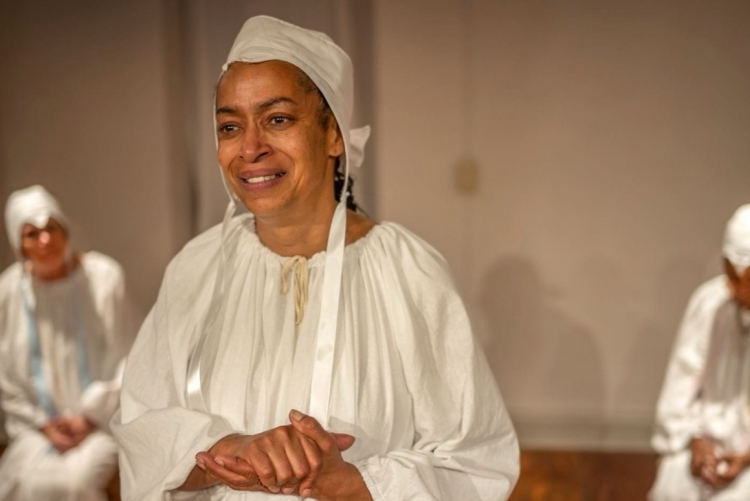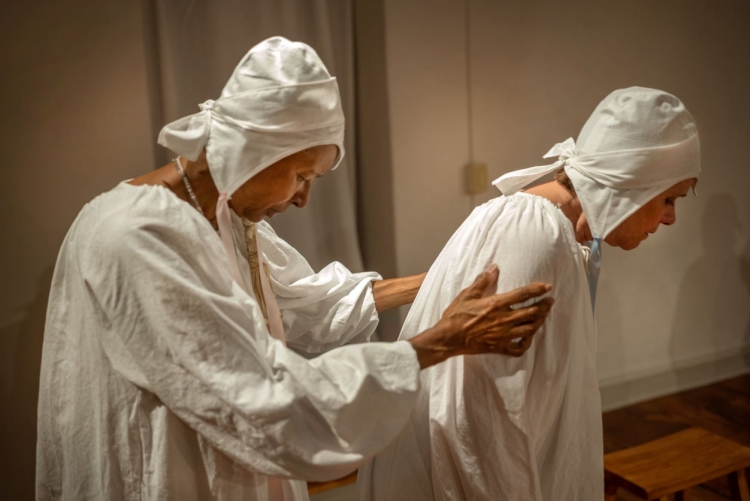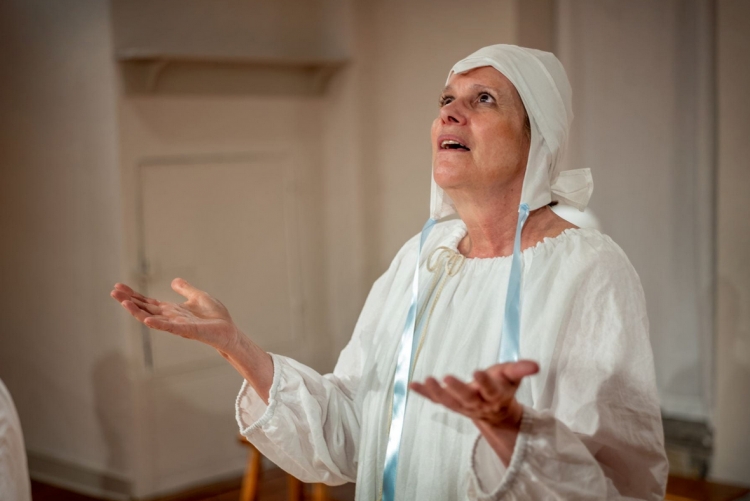I designed these two world premieres as part of Touchstone Theater's ten-day-long Festival Unbound, a celebration of Bethlehem’s history and a look towards its future as expressed through its community and the arts. I am so proud to have participated in the event, both as an artist and a community member. Both plays explore two different moments of Bethlehem’s history through the eyes of women.
The Secret won the 2019 Play of the Year at the ABE Awards in the Lehigh Valley Press. Coproduced by Mock Turtle Marionette Theatre, it was a visceral and musical journey through queer poet and Bethlehem native, Hilda Doolittle’s, life and poetry. The play, completely devised by the company, combined Hilda’s poetry and life events to create a visually and aurally compelling performance. This was the first time I was creating an environment for performers, musicians, and host of puppets. Meeting all the needs was a special challenge in a small venue and limited timeline. This was a true community effort as my students built the numerous hand-made paper flowers and details used throughout the play.The Secret is about the life of and work of poet Hilda Doolittle (H.D.). The play, coproduced by Mock Turtle Marionette Theater and Touchstone, is the culmination of Finding. H.D., a 12-month public community-based exploration of Doolittle, who is now widely recognized as a queer, feminist visionary, and the most influential literary figure born in the Lehigh Valley.
In Hidden Seed: Bethlehem's Forgotten Utopia, based on Lehigh English Professor Seth Moglen’s historical manuscript, Moglen was writing a theatrical script for the very first time. I worked closely with him to help him navigate the process through readings and workshops. The story of Bethlehem’s roots is told by three women. A enslaved African, a Native American, and a German immigrant, now ghosts, have returned to lay bare the glorious and ugly moments of the Moravians’ founding of the city. For this production, I designed both the environment and historically accurate costumes. I was fortunate to have the museum and curators literally next door for my research. Since the performance took place in the Single Sister House, a preserved Moravian building, the space itself was the perfect environment supplemented by simple props. As the audience entered up the staircase, they encountered each woman in a separate room, one at the spinning wheel, one knitting, and a third writing a letter. As the performance began, the three women gathered together in the playing space, surrounded by a ring of chairs in the large common room.
